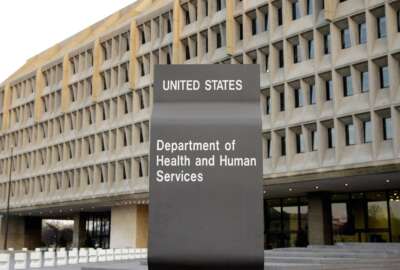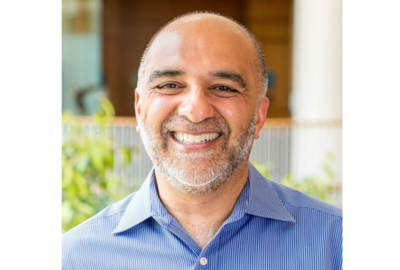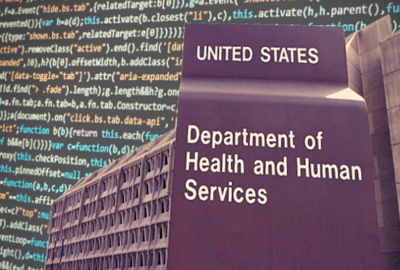Federal Plan for improving electronic-health info
Following its previous Federal Health IT Strategic Plan, the Health and Human Services Department is looking to continue the effort with its latest plan.
Following its previous Federal Health IT Strategic Plan, the Health and Human Services Department is looking to continue the effort with its latest plan, which covers the next six years. HHS is now open for public comment. Officials are hoping to continue improving the exchange and availability of electronic health information. They also have some new goals in mind. Federal News Network’s Eric White got the change to speak to one HHS official: Dustin Charles, Policy Specialist in the Office of the National Coordinator for Health Information Technology on the Federal Drive with Tom Temin.
Interview Transcript:
Eric White Absolutely. So why don’t we just take the 40,000-foot view and hear a little bit about what this new update to the federal health IT strategic plan is, and what it hopes to accomplish.
Dustin Charles Our federal Health I.T. mission is to improve the health and well-being of individuals and communities using technology and health formation that is accessible when and where it matters most. We have a vision of a health system that uses health information to engage individuals, to lower health costs, to deliver high quality care and improve individual and population health. So, when we were planning this version of the strategic plan, we really wanted to focus on improving the experience and outcomes for those who are use and are impacted by health it. So, if you look at the plan, you’ll see what we’ve done with the goals is delineate them by the different types of health I.T users. So, goal one focuses on individuals, populations, and communities’ goals to those involved in health care delivery, including patients, providers, caregivers, public health professionals, and others in the health care sector. Goal three is focus on research and development of health I.T. and finally, go for just as that infrastructure needed to achieve the other goals.
Eric White When you say health infrastructure, you know the health IT infrastructure, which seems to be always the biggest bugaboo, right? I mean, it’s because a lot of these places, you know, the hospitals and medical offices weren’t set up for this kind of exchange of information and to be constantly updating their technology. What does that specifically say in this new plan to address that?
Dustin Charles Have we done these plans? So, the earlier plans were really focused on adoption of new technology, particularly getting providers to adopt electronic health record systems. And then, for example, the next plan was really more about the exchange. And the current plan that we’re in is really more about addressing barriers to exchange and ensuring that there is that access that we use to health information. So, with this plan, we are focusing a little bit more broadly outward. We have made major headways in exchange, but there are still some obstacles in the way and there are still some new charging technologies. We want to make sure are addressed in this plan as we move forward in the next six years. So, it’s really taking the progress that we’ve done and then looking at, okay, where are some of the remaining gaps and what are the new things that need to be addressed?
Eric White Yeah. Can we go back to the previous plan? What was some of the progress that you all saw in the implementation of that one? And you know out yourself which ones are you guys most proud of?
Dustin Charles Some of the stuff we’re most proud of is some of the advancements. In exchange, we have what we call the TEFCA. The national exchange framework is definitely one of them. And the other side of the exchange is the Fire standards, sort of the HL7 FHIR standards that allow providers to have a, a shared way of communicating electronic health information with one another. We’re also happy to see that a lot of hospitals are particularly APIs. And so not just FHIR APIs, but they have some of their own homegrown APIs and others that they’re using as well. So, we’ve seen significant progress throughout the whole health IT in using a lot of the technology that has been developed, and particularly those promoted through the federal government.
Eric White We’re speaking with Dustin Charles. He’s a policy specialist at the office of the National Coordinator for Health Information Technology, part of the Department of Health and Human Services. And so, let’s go back into the plan itself. You guys coordinated with a plethora of other partners in this activity. Can you tell me a little bit about the roles that some of the other agencies played in the formulation of this new policy?
Dustin Charles One of the things to note this is a federal health IT strategic plan. So, it doesn’t just cover the strategies for the Department of Health and Human Services, which is what my office is under, but the entire federal government. So, we might, within the plan, cite some federal programs or projects as examples, but we don’t prescribe any specific programs for federal agencies to engage in. Rather, the plan itself serves as a roadmap for federal agencies to help them prioritize their resources, coordinate efforts across agencies, signal priorities to the private sector, as well as benchmark and assess any changes over time. So, we wrote the plan broadly to capture the overall priorities and goals of the federal government in regard to health IT. So some of the things that federal agencies do in health IT beyond just the work that ONC does is regulate, purchase, developing news, help it to deliver care, improve patient health and provide services the public may funding contribute to health, I.T., development and research at all the different levels of the government and also we also facilitate coordination across public and private sectors. We want to align our standards that we’re promoting with the work that’s being done in the private sector. We want to promote innovation and competition. We want to share best practices. So, because of this, when we get to the final plan, it will be that roadmap that will guide federal agencies, initiatives, and programs over the next six years.
Eric White Gotcha. And this plan is now out for public comment. I’m just curious, who are some of the stakeholders that you all expect to hear from in regard to, how the plan will actually be implemented?
Dustin Charles What we really hope to hear from as many different people within the health care industry as we can. Anyone who has an interest in health, IT, and the role of the federal government. We do expect to hear from health I.T developers. We expect to hear from hopefully health care organizations as well as we would love to hear from patients and health care providers themselves and kind of get what their insights are, what they would like to see in Health IT. We have public comment until May 28th so you can access our public comments at healthIT.gov. Forward slash feedback and up until May 28th. And we look forward to getting those comments. We will share them with our colleagues in other federal agencies and coordinate them to develop them.
Eric White I’ll give you my comment now. Can you make it so that I don’t have to fill out the same form seven times every time I visit the officer? Is that out of your purview?
Dustin Charles I think that’s something that I will add to that.
Eric White Fantastic. All right. Well, I’ve submitted my public comment. Now, Dustin Charles is a policy specialist with the office of the National Coordinator for Health Information Technology. Dustin, thank you so much for joining me.
Dustin Charles We do.
Copyright © 2025 Federal News Network. All rights reserved. This website is not intended for users located within the European Economic Area.
Eric White is news anchor and Federal Drive producer at Federal News Network.
Follow @FEDERALNEWSCAST






